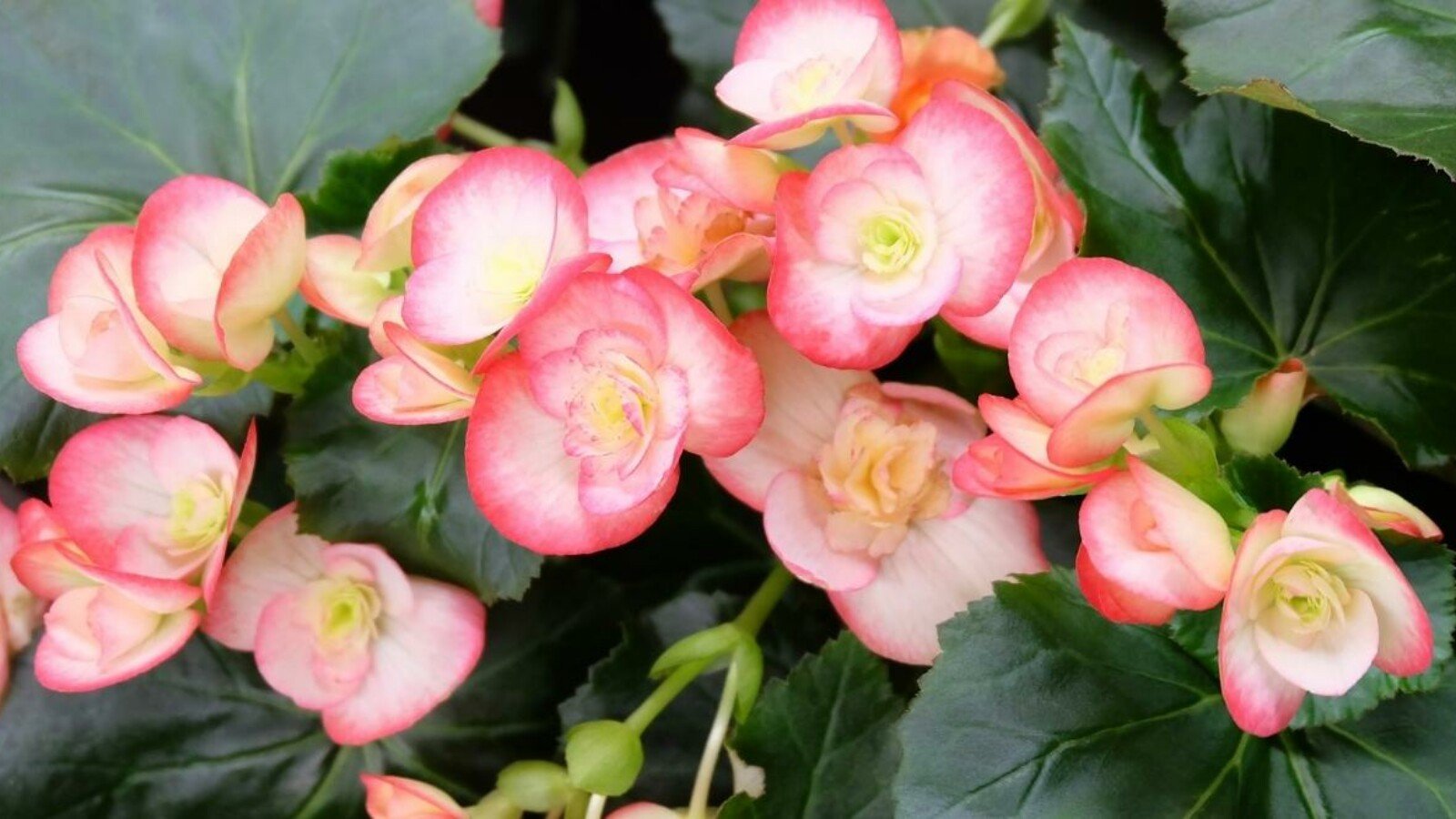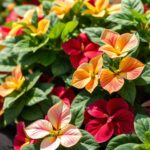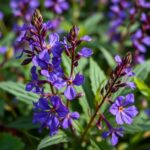Are Begonias Annuals or Perennials? Understanding Their Life Cycle and Care Tips

Begonias are a popular choice among gardeners due to their vibrant foliage and beautiful blooms. However, there often arises confusion regarding whether these plants are annuals or perennials. Understanding their life cycle is essential not only for proper identification but also for optimal care. This article delves into the characteristics of begonias, exploring their growth patterns and lifespan. Additionally, we will provide essential care tips to help you nurture these stunning plants, ensuring their longevity and health in your garden or home. Whether you're a novice or an experienced gardener, this guide will enhance your begonia cultivation experience.
Are Begonias Annuals or Perennials?
Begonias are primarily considered perennials, but their classification can vary depending on the specific species and the growing conditions. In warmer climates, most begonias thrive as perennials, returning year after year, while in cooler regions, they are often treated as annuals due to temperature sensitivity that can affect their growth and survival. Thus, understanding your specific climate and the variety of begonia in question is crucial for determining how to cultivate them effectively.
Types of Begonias
There are over 1,800 species of begonias, categorized into several groups, including fibrous-rooted, tuberous, and rhizomatous begonias. Fibrous-rooted begonias are often grown as annuals because they do not survive frost. Meanwhile, tuberous begonias can act as both perennials and annuals, depending on climate, as the tubers can be stored over the winter and replanted in spring.
Climate Impact on Begonias
The climate plays a significant role in whether begonias are treated as annuals or perennials. In tropical and subtropical regions, begonias thrive as perennials with minimal care, while in temperate climates, the cold winters can kill them off, leading gardeners to grow them as annuals instead.
Growing Conditions
Begonias prefer indirect light, high humidity, and well-draining soil, which can influence their perennial or annual status. If the growing conditions are optimal, they can flourish as perennials; however, inadequate lighting or excess cold can lead to their classification as annuals, as they may fail to survive the off-season.
Maintenance Practices
Proper maintenance, including watering and fertilization, can enhance the longevity of begonias. For those grown as perennials, regular pruning can promote healthy growth and blooming cycles, while begonias treated as annuals might require frequent replacements rather than ongoing care.
Storage for Winter
For gardeners in cooler climates who wish to keep their tuberous begonias as perennials, storing the tubers over winter is essential. After the growing season, the tubers should be carefully dug up, cleaned, and placed in a cool, dry area to prevent rot, allowing them to be replanted in spring to continue their growth cycle.
| Begonia Type | Classification | Care Requirements |
|---|---|---|
| Fibrous-rooted | Annual | High humidity, indirect light |
| Tuberous | Perennial (or Annual) | Store tubers in winter |
| Rhizomatous | Perennial | Moderate watering, indirect light |
How can you tell if a begonia is perennial or annual?


To determine whether a begonia is perennial or annual, you should consider several key factors, including the species of the begonia, its growing conditions, and its hardiness. Here are some guidelines to help you identify the type of begonia you are dealing with:
1. Species Identification
- The begonia genus consists of over 1,800 species, and some are inherently perennial, while others are classified as annuals.
- For example, Begonia tuberhybrida is commonly grown as an annual, while Begonia grandis is known to be a hardy perennial.
- Investigate the specific species name or variety to understand its growth cycle better.
2. Growth Cycle
- Annual begonias complete their life cycle in one growing season. They typically germinate, flower, set seed, and die within a single year.
- Perennial begonias, on the other hand, can survive winter and regrow each year. They enter a dormant state during unfavorable conditions, allowing them to persist longer.
- Observing whether the plant lasts through winter can provide strong clues about its classification.
3. Growing Conditions
- The environmental conditions in which the begonia is planted can affect its growth. Some begonias that are usually perennial in warmer climates may behave as annuals in colder regions.
- Factors such as temperature, humidity, and soil quality play crucial roles in whether a begonia will thrive year after year or die off after one season.
- Make note of the local climate and how it aligns with the documented preferences of the begonia variety.
4. Physical Characteristics
- Observe the physical traits of the begonia, such as leaf shape, size, and color. Some perennials have thicker leaves that help retain moisture and are often more robust.
- Annual begonias may have a more delicate appearance and are often bred for vibrant flowers rather than longevity.
- Taking photographs or notes on these characteristics can assist in identification over time.
5. Plant Care Recommendations
- For proper identification, seek out care recommendations for your specific begonia. Annual begonias require different maintenance compared to perennial varieties.
- Annuals may need to be replanted every year, while perennials should be cared for to ensure their health during dormancy.
- Familiarize yourself with the growth habits and necessary care for the type of begonia you have to support its best growth.
By analyzing these factors—species identification, growth cycle, growing conditions, physical characteristics, and care recommendations—you can effectively determine whether a begonia is a perennial or an annual.
How do I keep begonias over winter?


To keep begonias alive over winter, you must consider their specific needs for temperature, light, and water. Depending on the variety you have, the methods may vary, but generally, begonias cannot withstand frost and are sensitive to cold temperature. Here’s a comprehensive guide on how to care for your begonias during the colder months.
Understanding Begonia Types
To successfully care for begonias over winter, it's essential to know the specific type you have, as they may have different requirements.
- Tuberous begonias: These are often grown as annuals and require special attention.
- Wax begonias: These can be overwintered in the right conditions.
- Rex begonias: Known for their decorative leaves, these plants need warmth and humidity.
Preparing for Winter
Before winter arrives, take necessary steps to prepare your begonias for the colder months. This preparation ensures better survival rates.
- Prune dead leaves and stems to promote new growth.
- Move the plants indoors before the first frost.
- Inspect for pests and diseases that may spread indoors.
Temperature and Environment
Begonias thrive in warm environments, so providing an appropriate temperature is crucial during winter.
- Maintain an indoor temperature of around 65°F to 75°F (18°C to 24°C).
- Avoid placing the plants near drafty windows or cold areas.
- Use a heating mat if indoor temperatures drop significantly.
Watering Practices
Adjusting your watering routine during winter is essential, as begonias require less water when they are dormant.
- Water only when the top inch of soil is dry to the touch.
- Reduce watering frequency to prevent root rot.
- Use lukewarm water to avoid shocking the roots.
Light Requirements
Providing adequate light is essential for the health of your begonias during winter.
- Place your begonias in a location with bright, indirect light.
- If natural light is low, consider using grow lights.
- Rotate the pots occasionally to ensure even light distribution.
Questions from Our Readers
Are begonias annuals or perennials?
Begonias can be both annuals and perennials, depending on the specific variety and the climate in which they are grown. In warmer climates, some begonias can thrive as perennials, while in cooler regions, they often act as annuals due to frost exposure.
How can I tell if my begonia is an annual or perennial?
To determine if your begonia is an annual or perennial, check the plant's specific variety and growth habits. Typically, annual begonias will not survive winter, while perennial varieties will return each year when properly cared for.
See also:
Can perennial begonias survive winter outdoors?
Yes, perennial begonias can survive winter outdoors in climates that do not experience severe frost. However, it is important to protect them with mulch or other coverings to help retain warmth and moisture during cold months.
Do annual begonias need to be replanted every year?
Yes, annual begonias need to be replanted every year, as they do not come back after the growing season. Most gardeners treat them as seasonal plants, replanting them each spring to enjoy their vibrant blooms throughout the summer.

If you want to read more articles like Are Begonias Annuals or Perennials? Understanding Their Life Cycle and Care Tips, we recommend you check out our Plants category.
Leave a Reply
Related Articles